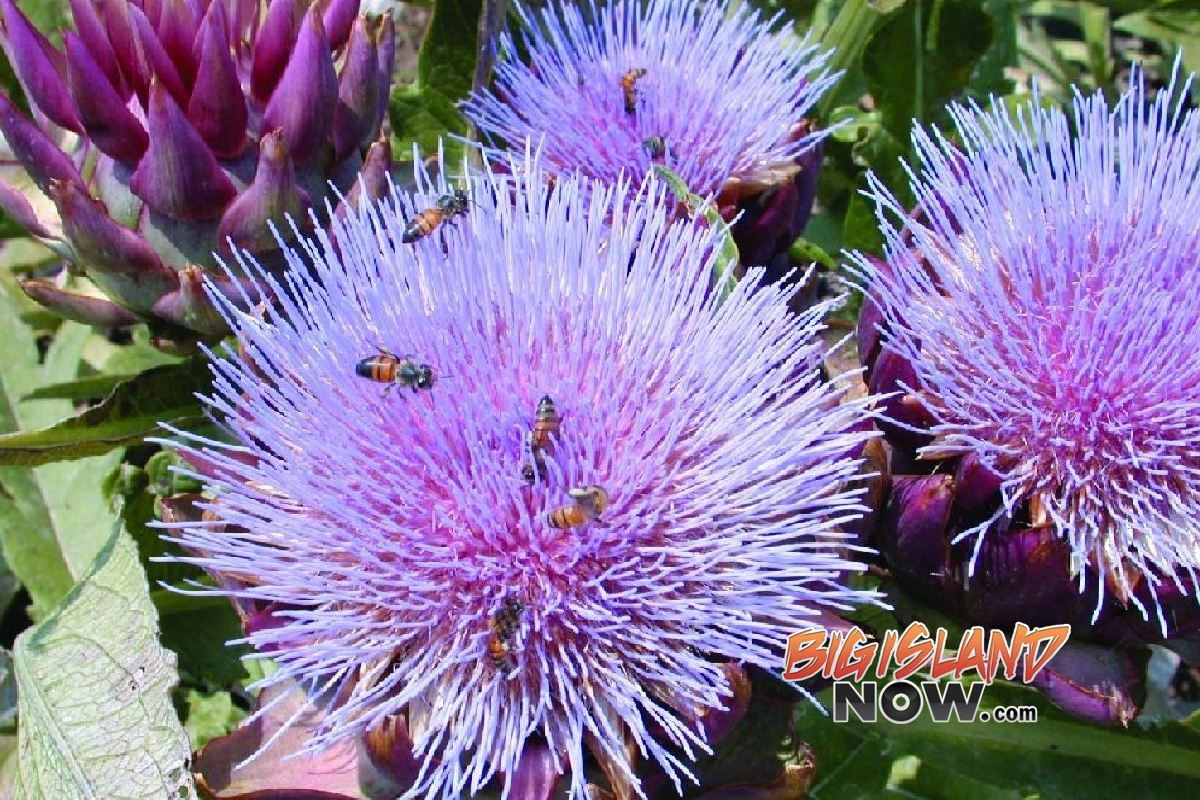Artichokes: An Attractive Addition to Any Garden

The bright blue flowers of the artichoke plants make it a showstopper in any garden. PC: Dr. Daniel Leskovar, Texas Agricultural Experiment Station
Whoever thought of steaming the bulbous green head of a thistle plant came up with a pretty good idea.
Cynara scolymus, a thistle commonly known as artichoke, is a member of the sunflower family that has been enjoyed on the tables of Europe for over 3,000 years.
Endemic to dry Mediterranean regions, the artichoke made its way across Europe through royal means: In the mid-15th century Catherine de Médici, the young wife of King Henry II of France, brought artichoke plants to France from her native Italy. The artichoke’s popularity spread like wildfire, and it wasn’t long before the thistle was transported across the English Channel to Britain.
Artichokes are best grown in large gardens or as an ornamental yard plant. Their three-foot-long leaves and bright blue flowers make for a showy specimen, though the purpose of the plant is to grow it for its edible bulb.
Artichokes thrive in areas that receive minimal rainfall and they can grow in a range of elevations—from sea level to over 4,000 feet. They prefer elevations between 2,000 to 3,000 feet and don’t do well with “wet feet,” though artichokes have been grown successfully in wet areas by planting in raised beds under clear plastic canopies.
Feel free to try growing them wherever you may live, especially if you are one of those people who seem to be able to grow anything anywhere.
Like all seeds and starter plants, look for a hybrid that best suits your area. Green Globe is one of the most popular and hardy, and is the one you usually find on the supermarket produce rack.
If you are starting artichokes from seed, it is best to sow them in a one-gallon pot. Keep the soil moist (but not soaking wet) for about two weeks. When the seedlings finally pop their heads through the soil, they will look like light green dandelions. Keep the young plants in pots until they have a cluster of fuzzy, 6-inch-long leaves.
While you are waiting for your artichokes to get to this stage, prepare a planting area in a sunny, well-drained location. Allow a 6-square-foot area for each plant.
When preparing to plant artichokes, dig a hole twice as wide and deep as the pot your young artichoke is in. Fix the new plant in the ground with a mixture of 25% crushed eggshells (you can get this at a good garden supply house like Garden Exchange in Hilo) and 75% organic compost. It is not necessary to use any other fertilizers or soil amendments.
After about six months, your artichokes will be ready for harvesting. Harvest the bulbous heads just before maturity.
Boil them for 20 to 30 minutes and serve them with drawn butter or an olive oil-mayonnaise sauce and balsamic vinegar. Immature bulbs can be cut and eaten raw. If you are going to eat them in this fashion, quarter them and remove the prickly center with a knife before eating them.
Artichokes are self-propagating. Mature plants will send out shoots and multiply; all you have to do is separate the young shoots from the mother and find a good spot to plant them. Artichokes are perennial and can produce for up to 10 years, so with enough plants, it is possible to have fresh artichokes nearly all year round.
Happy gardening!








